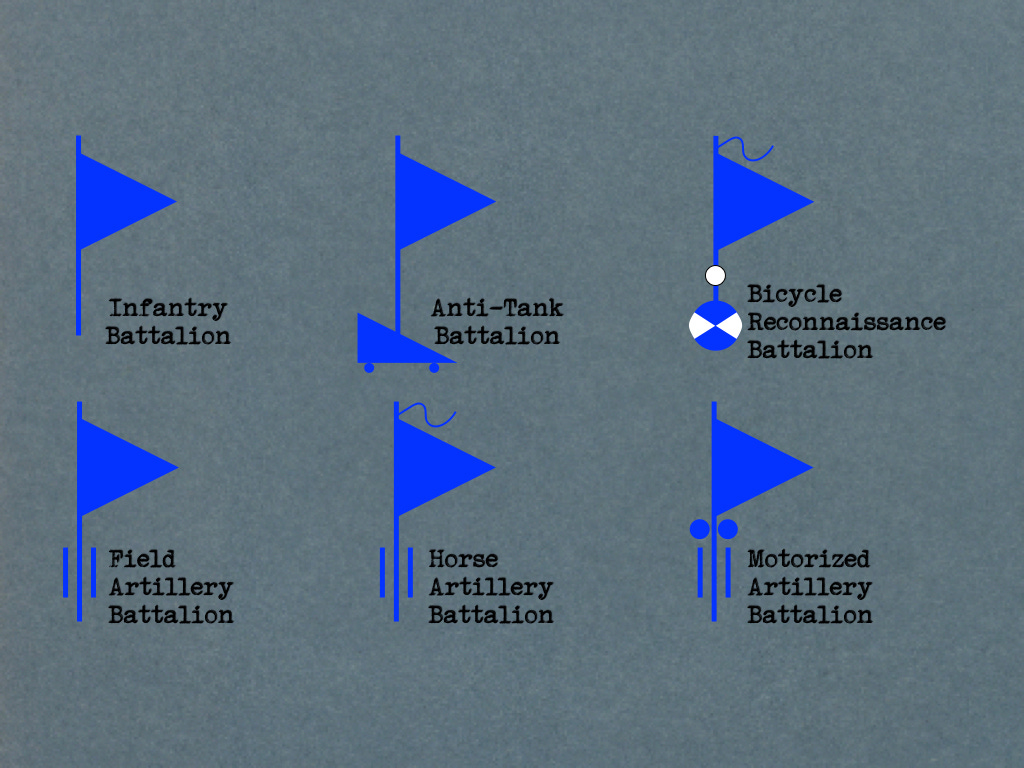Artillery Radicals
Military Map Symbols
As was the case with other types of German tactical symbols, the basic flag represented either a generic unit or an infantry unit. Thus, an ordinary infantry battalion - with walking riflemen and horse-drawn transport, was indicated by the basic battalion flag. For other kinds of battalions, this symbol was modified by adding “radicals” to the top, bottom, or middle of its staff.
The triangle radical, for example, indicated an anti-tank unit. Small circles under that triangle indicated that the anti-tank unit was motorized. Thus, the above symbol represented a motorized anti-tank bat talion. (As almost all anti-tank battalions in the German Army, even those of divi sions that were otherwise largely muscle powered, were motorized, the wheels were often dispensed with.)
Artillery unit symbols were assembled in a somewhat more elegant way. The radical for field gun was joined to the basic battalion symbol to produce a symbol that was both reminiscent of other artillery symbols and easy to draw. Just as the basic infantry battalion symbol presumed foot mobility, the basic artillery symbol should be taken to indicated an artillery battalion powered chiefly by draft horses. Adding a pennant to the top of the artillery battalion symbol indicated that the unit was a horse artillery (Reitende Artillerie) outfit. That is to say, it was an artillery unit that was equipped with larger number of horses than ordinary horse drawn battalions and was thus able to mount all the gunners. Such units, while plentiful in the opening days of World War I, were few in the German Army of World War II.
Motorized artillery battalions, indicated by the two “wheels” mid-way up the staff, were somewhat more common than horse artillery units. (Note: The fact that there are two wheels rather than one indicates that the battalion was entirely motorized. A single wheel indicated partial motorization.) As might be deduced from the horse artillery battalion symbol, the symbol for a horse cavalry battalion was the basic battalion surmounted by a pennant. This pennant was also used to designate those units which had supplanted horse cavalry as the chief means of division level reconnaissance. A symbol that sported the cavalry pennant, the single wheel radical for partial motorization, and the “x in a circle” radical for bicycle troops represented a reconnaissance battalion in which the men of the line squadrons rode bicycles while those of the heavy squadron traveled in trucks.



